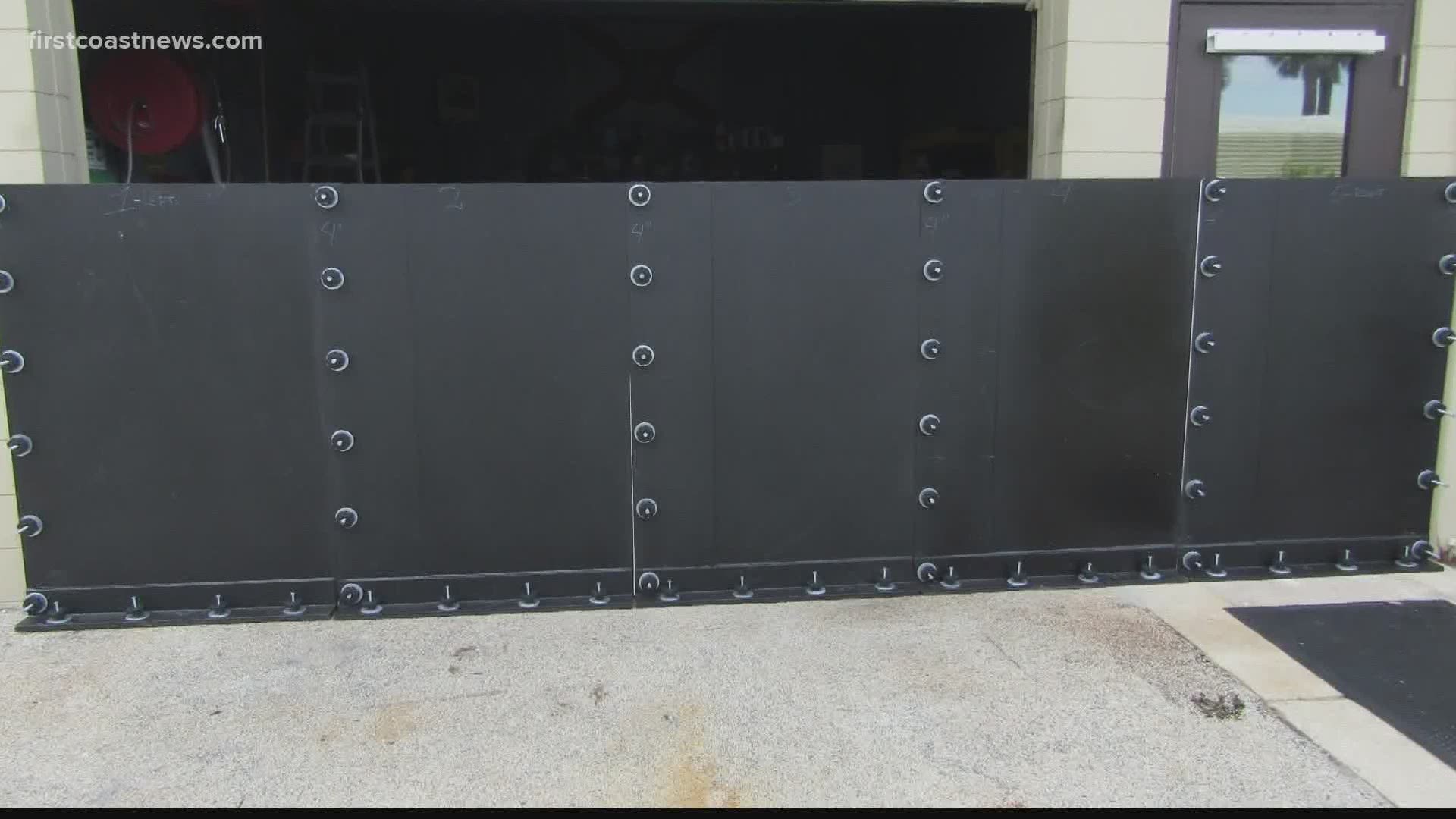ST. AUGUSTINE, Fla — St. Augustine’s wastewater treatment plant has a brand-new hurricane protection system that the facility’s director says brings “a lot of peace of mind.”
After hurricanes Matthew and Irma, in 2016 and 2017 respectively, Stephen Curmode told First Coast News in an interview Monday that discussions intensified about coming up with an improved strategy. When Matthew devastated the nation’s oldest city, the treatment plant itself wasn’t compromised but several of the lift stations – facilities that assist in the gravitational flow of sewage effluence to the plant – were.
At only a few feet above mean sea level, Curmode said the plant, which serves all of St. Augustine and some addresses outside city limits, is becoming ever more vulnerable.
“We’re going to see more and more,” he said of serious storms. Curmode, who previously ran similar operations in Fort Lauderdale, said Irma was the 52nd named storm of his career.
He described the likely course of events if his current station were to shut down.
“The first thing that would happen would be, [the plant] would overflow and that would go out into the [Matanzas] river with untreated sewage," he said. “After that [sewage] would start backing up in the streets.”
In the months following Matthew, one of the earliest ideas was a perimeter wall surrounding the entire plant, “that would go up to 25 feet, that would protect us from a category five [hurricane].”
The problem with that was the price.
“I believe, like, $5 million was the low end,” Curmode recalled, adding that there would have been a significant cost building a ramp long enough to allow large trucks to get over the wall.
Other ideas came and went as well, many of which priced in multiple millions. Until Curmode, tasked with finding an affordable solution, discovered a system of portable, watertight barriers that could be installed quickly in anticipation of a storm. The manufacturer, Flood Risk America, is headquartered in Lake Worth, Fla.
“They can be built in any shape, for any application,” he said, pointing to several panels, most roughly five feet by five feet.
When possibly damaging weather is expected, the panels are mounted to bolts that were attached to key structures during the system installation. The strategy is to protect the machinery – especially electronic circuitry and generators – that keep the plant processing wastewater.
“I can put the entire plant up, which consists of 45 panels – I can do that in a half a day with two people,” Curmode said, comparing that efficiency with sandbagging, which the plant has done until now. “Sandbagging would take us a few days, with eight people, but we’d only be protecting to about two to three feet. This flood barrier, two people can put it up in half a day.”
All, he added, “with no heavy equipment.”
“The sandbags would require a big forklift to carry the piles of sandbags to the different places around the plant,” he said.
Curmode said the panels’ five-foot height is suitable for storms with category three strength – interchangeable with taller panels if ever needed - but that the panel material itself is rated to withstand a category five storm.
“The manufacturer told me that [this material] is actually used on the hulls of ice breaker [ships],” he said.
I couldn’t help quipping, “You’ve gone from sand castles to Lego?” but with a nod to the apparent simplicity and ease of the system.
“Yes, pretty much,” Curmode smiled.
And, considering the multi-million dollar cost of earlier ideas that would have taken much longer to install, Curmode might be happiest about the price tag of the barriers, which he said were delivered with a lifetime warranty.
“$140,000 for the complete, total install,” he said.
“So, this saved the city of St. Augustine untold millions?,” I clarified.
“Yes,” he said.

